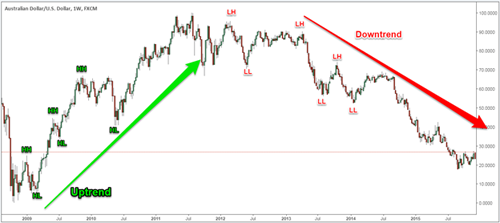Long-Term Investment Strategies in Forex Trading

There is a widely held belief that investing is a technical skill, and one that requires a lot of time sitting in front of a computer and hitting performance targets set by a boss that seeks on only pad their pockets with bonuses that traders ultimately earned for them.
Forex trading can be just as described as above, but there is another side of trading where a different style of trading, less hours in front of a computer and more time letting the investment do the work. It is a style much more suited for those who have other things going on in their lives – let it be social life, young family, studies or other interests. It is called long-term investments, and these investments last months instead of minutes or hours that are more common amount full-time professional traders.
How Forex trading works (FX Australia) comes down to speculating on the value of currencies over a period of time. There are different schools of thought about if it is easier to predict the value over shorter or longer time periods, but it basically comes down to an approach. Short time frames mean the banker lifestyle, while longer term means you can do other things and get away from behind the screen.
Long-term Investments
The long-term investment comes with a lot of benefits. It's a lot more reliable to trade longer time frames because the trends are a lot more stable and it's a lot easier than trading the intraday noise. Long-term trading also requires a lot less maintenance of the trades, so you can simply place the orders and walk away. You can even get incomparable higher rewards when you try to catch the big market trends and it's also less emotional to trade long-term.
Jesse Livermore, one of the greatest traders who have ever lived once said: "It never was my thinking that made the big money for me. It always was my sitting. Got that? My sitting tight." In other words, Jesse Livermore said that he made big money trading holding a trend and not by getting in and out of the market on a daily basis.
What is long-term Forex Trading?
The main idea behind long-term trading is to catch the big trends. More often than not, behind every long-term trend there is a long-lasting fundamental catalyst that is driving that trend. In essence, you're better off if you can determine what those fundamental forces are that are driving the trend.
Traders who use this trading approach need to use a long-term strategy that combines fundamental analysis with technical analysis.
Most hedge fund managers derive most of their profits from capturing one or two big trends over the period of an entire year. In some cases, you make a lot more profit from a simple one long-term position than hundreds of intraday trades.
But how do professional traders identify and capture the long-term trend?
Long-term Forex Strategies
While there are many different trading styles and strategies to capture the long-term trends, there are some general trading principles that are universally relevant to long-term trading. These guidelines are based on the price action behavior.
What is the long-term trend?
To correctly answer this question, you need to use the proper time frame and the right charts for long-term investment – this is the weekly and monthly charts. You can also use the daily charts to more precisely time your entries.
How to determine the trend?
The trend refers to the market direction. You simply need to determine whether the market will rise or fall. The right way to determine the direction of the trend is by following some simple price action rules. (What is price action?)
 An uptrend can be identified by a series of higher highs followed by a series of higher lows. Conversely, a downtrend can be identified by a series of lower lows followed by a series of lower highs.
An uptrend can be identified by a series of higher highs followed by a series of higher lows. Conversely, a downtrend can be identified by a series of lower lows followed by a series of lower highs.
A trading market will always behave in the same way if you're following sound trading concepts.
What are the fundamental drivers behind the trend?
Once you have determined the trend direction it's always best to check what the fundamental forces behind the trend are. If the fundamental forces confirm your directional bias than you have higher chances the trend will continue in your direction.
Central banks use different monetary policies to drive the currency exchange rates. They are the most influential catalysts in the Forex market. Your primary concern should be to study what impact these monetary policies have on the trending direction.
For example, the bullish AUD/USD trend that started from 2009 lows was because of the carry trade. Basically, investors where borrowing capital in a low interest rate country and parking their money in a high interest rate country, which drove the AUD/USD exchange rate higher.
Conclusion
Long-term investing requires detecting the trend first, then managing the entry and exit points using basic technical analysis tools. Once you have determined the underlying trend, don't forget to use adequate risk management strategies so you can ride the trend and not be taken out at first minor retracement.
MORE



